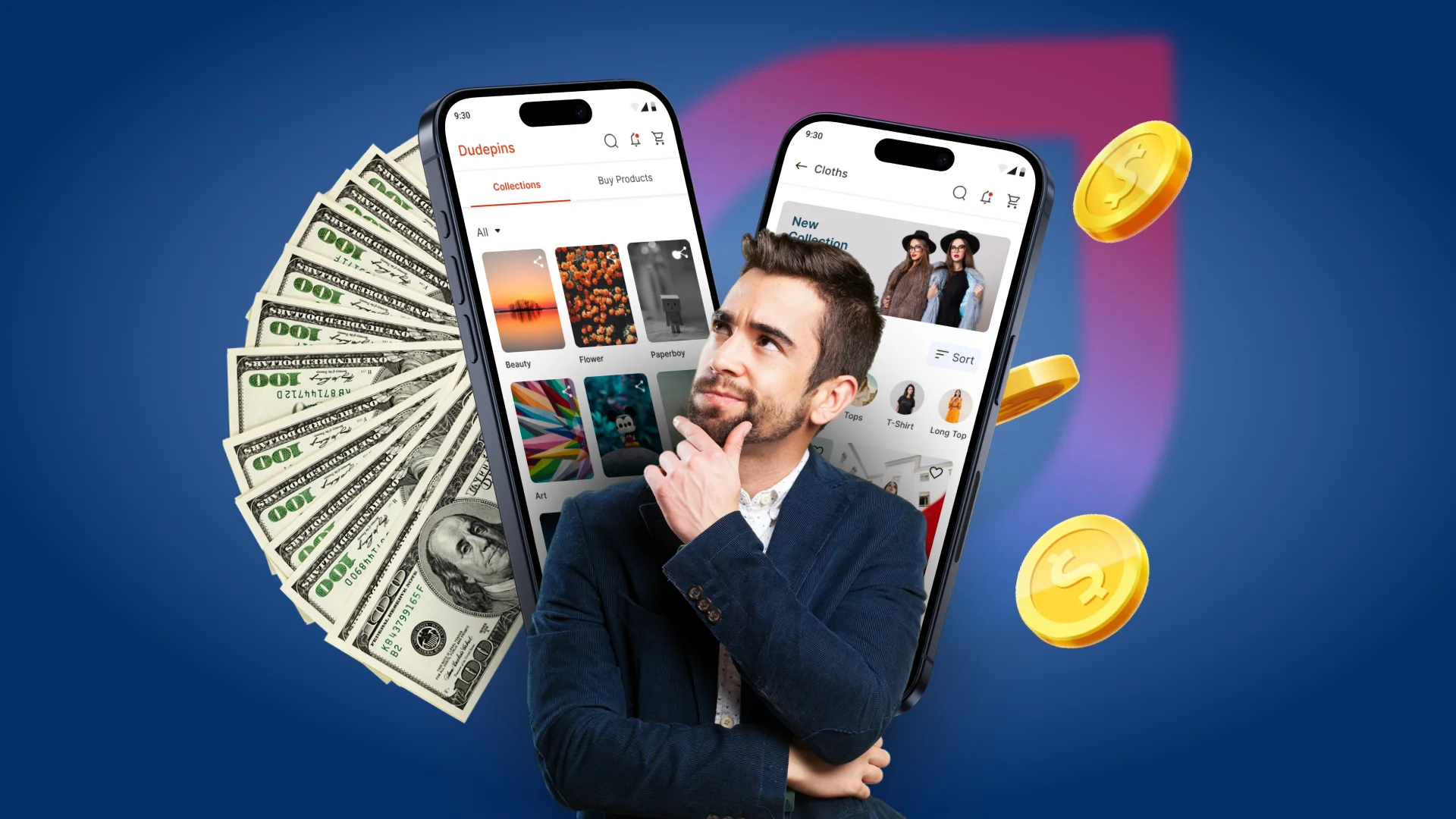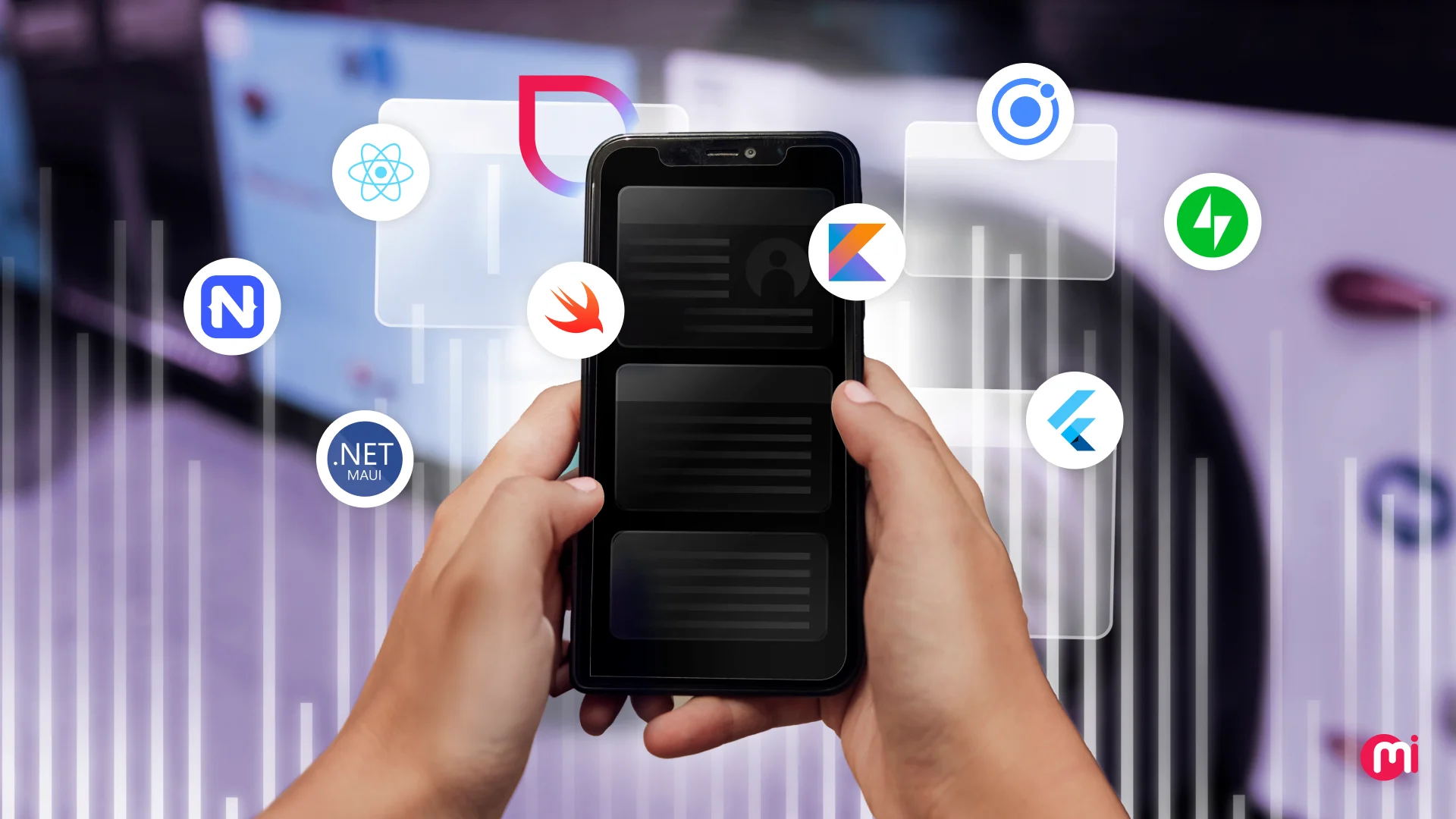How to Patent an App Idea in 2025?
- Mobile
- March 9, 2024
Got an innovative patent an app idea that has the potential to drive better business opportunities? Your idea is that great, you want to rule the market with no competition, and then a mobile app patent is your solution. But how to do that? Well, this blog covers everything you need to know about how to patent your mobile app idea.
You cracked a great mobile app idea that can drive revolution to the internet world and benefit humankind. All the great credit for this idea goes to you, but only you know it and your inner circle.
What if? Someone else who gets the same app idea as yours builds it first and takes the fame that you think you deserve! That’s where the PATENT comes to your rescue as the intellectual property law! But before you start your brainstorming, you should also know some important statistics on the patent.
As per the patent filling data (United States Patent and Trademark Office), around 812,675 patent applications were filed until 2024.
And it is quite obvious to have a seriousness about patenting a mobile app idea as it offers security from copycats and many benefits. Therefore, one of the most asked questions by startups and entrepreneurs before starting mobile app development is, “How to patent a mobile app?”

Here, we will cover the ultimate guide on patenting a mobile app idea that will prepare you to confidently file your patent application.
So, let’s just start with…
What Does it Mean to Patent an App Idea?
In essence, a Patent serves as a form of intellectual property protection that safeguards your mobile app ideas from unauthorized or unpermitted usage. It protects your app ideas and prohibits others from changing or selling them, considering you that app idea’s rightful owner.
In the end, patenting your mobile app idea makes sure that none gets profits or ruins by claiming credit falsely for your invention.
What are the Different Types of Patent Applications?
As the patent is a type of intellectual property rights, it also has its subtypes, which we’ll go through in this section:
Provisional Application
A provisional patent application (PPA) is a short-term application issued by USPTO to be filed before filing the formal patent application. It secures your app idea from being copied in the crucial first 12-month period with the term “Patent Pending” before getting the final non-provisional patent application filing.
During that span of 12 whole months, you get time to prepare and pitch the idea for the final patent filing and test its market feasibility with MVP development.
It hardly takes ten or fewer pages of documents to describe your product, its design, and more to clarify its purpose.
Please keep in mind that this provisional patent application cannot be indicated as a final patent.
The best benefit you get with this is that it is less expensive than directly going for the complete patent application. Additionally, it may not require the need to hire a patent attorney.
With benefit, it also raises a concern for the length of validity, shorter span of protection, not having merit-based examination, and limitation to file it before completing the design invention.
When filing a provisional patent application, it should include:
- Inventor’s residence information
- Invention title
- Attorneys’ information
- Docket Number
- Correspondence address
- Mentions of the interested U.S. government agencies (when filing for the U.S. region only through USPTO)
Non-provisional Application
As named, it’s the direct opposite of a provisional patent application, meaning it’s long, complicated, and complex in filing procedures.
Under non-provisional applications, you can file without any claim created on the application made in the convention nation or with no app reference that is present in the procedure. It should be accompanied by a total claim and specifications. It must have the invention’s written description and a claim that defines the invention legally.
Also, a non-provisional patent contains many form-filling terms and rules, breaking such can raise difficulties for you. However, it’s worth the hassle.
Unlike provisional patent applications, non-provisional patent applications are issued into lawful claims. You can even call it a procedure to file your utility patent for the USPTO to review and grant it. Therefore, it’s extensively known as a “regular” utility patent application.
How to Patent an App Idea in 7 Steps?
Here’s the basic steps you should follow to understand how to patent an app idea:
Step 1: Choose the Patent Type You Want to Register for Your App
You have your mobile app idea, but you can file patents for different parts of your mobile app. If you see, there are mainly two types of patents you can file for your mobile app idea:
Utility Patents
Mainly, a utility patent focuses on protecting the functionalities of your inventions, like unique processes, mechanics, improvements, and technicalities. In the specific area of mobile apps, you can file utility patents for unique aspects, like algorithms, processes, features and functionalities, data structures, hardware integrations, etc.
Design Patents
The uniqueness of mobile app UI/UX design and logo design is also eligible for a patent to protect the visual appearance of an invention.
Step 2: Conduct Extensive Mobile App Patent Research
Deciding to patent your unique invention is the big decision you have taken. It requires tons of research work to find similar patents registered, learn about filing them, and do more regarding the same.
Step 3: Discover and Register with a Patent Lawyer
To present a precisely made top-notch patent and maximize the scope of your patent application getting chosen, you need to consult with and employ a patent lawyer who deals with software patenting.
As it’s a legal procedure, it might incorporate litigation. Thus, it’s advised to go with an analytical approach to hire a professional to deal with this legal matter.
Step 4: Prepare Documentation to File Your Mobile App Patent
After confirming the eligibility of your mobile app idea for the patent, you can begin preparing patent filing documentation.
Although it’s a tedious procedure that demands lots of paperwork, you should explore it. Your patent application should include the following:
- Specification
- Declaration of your invention or Oath
- Data Disclosure Statement
- Entity Status Form
- Claims
- Application Data Sheet
- Drawings
- Patent Cooperation Treaty (Optional and for International Filings)
- Cover Sheet
- Fee Sheet
- Application to Make Special (Optional)
Step 5: File a Provisional or Non-Provisional Patent Application
It is the most critical decision you must make as per your requirements. If you want some buffer time to work on your invention and are ready to spend an extra penny, you should go for provisional patent protection.
In other conditions, if you are confident about your invention and have everything ready with you, you should opt for a non-provisional patent.
As you’ve read about both patent applications above, you might be clear about the type you want to go for. You may have to opt for more than one round of trials to get your patent application approval, but both have their own perks.
For the patent fees structure, you can check the website of the regional patent offices for the country you want to protect your invention.
Step 6: Respond to Patent Officer’s Comments If Any
After filing your patent application, you’ll have to regularly check the progress on it and see if any actions have been taken on it. Sometimes, when reviewing your patent application, examiners may ask for more explanation or changes about the provided invention information.
To put a positive impression on your intention to approve this patent, you should be proactive to reply to such requests.
Step 7: Pay Patent Maintenance Fees Regularly
After the approval of your patent, you have to maintain your patent and pay its monthly or annual fees to continue its effect. Maintaining a patent can be complex and time-consuming. Hence, it is advisable to hire a professional to manage patents.
What is the Eligibility Criteria to Qualify for A Patent?
As you finally decide to patent your mobile app idea and get the assurance that you can patent your app idea, you do want to know more about the eligibility criteria. So, let’s have a look at the eligibility criteria to qualify your mobile app idea for the patent:
It Must Be An Invention
Patents are utilized for safeguarding inventions. As per WIPO (World Intellectual Property Organization), they are provided with an invention that is explained as a solution to every issue.
Since the mobile app idea is not a physical thing, the mobile app development process is categorized as an invention. Nevertheless, the procedure should fix every issue simply like any invention.
Your App Idea Should Be Unique and New
Even if your mobile app idea fixes users’ issues, it doesn’t mean it qualifies for the patent. Your application idea should be original and new.
Your mobile app idea should not have been launched earlier, incorporating YouTube videos, books, articles, pending patent apps, and other sources. It should be unique and must not exist in any term else you cannot patent it.
Read also: How to Validate Your Mobile App Idea?
It Should Be Qualified As Useful
Being qualified as a useful app does not imply that your application idea cannot be under the entertainment category or something else like that. Your app just needs to perform, at least in theory. This restriction stops people from patenting these apps that are not useful.
Hence, you must produce a detailed and concrete description of how your app performs for claiming it as your asset.
Can You Patent Your Mobile App Idea?
Yes, you heard it right! Your apps and app ideas can be patented, with the only condition being to meet the eligibility criteria of novelty. However, please note that the app code cannot be patented, as it falls under the category of law covered by copyrights. On the bright side, you can patent the procedure of the app as it pertains to performing a specific task.
You can check that by asking a few questions, such as:
- What’s new in it?
- Is it not obvious?
- Does your idea contain technical implementation and support?
- Does your idea come under the eligible mobile app ideas for a patent?
If your overall answer is yes, consider your mobile app idea eligible for a patent. Apart from that, mobile apps also support sensors embedded in a mobile device for better data gathering and decision-making. So all of these, makes mobile app ideas eligible for the patent.
Types of Mobile App Ideas You Can Patent
When considering patenting a mobile app idea, you should understand that not every novel idea is eligible for patent protection. Hence, let’s explore mobile app ideas eligible for patent:
Mobile Gaming Apps
If your mobile game contains innovative gaming concepts, styles, and mechanics, as no one has ever done can be eligible for the patent.
AR/VR-based Apps
AR/VR technology in mobile app development has laid its anchor in the digital world with a booming effect. So, the AR/VR games with new methods of overlaying and interacting with digital content and inventive ways of immersing users into its world can be eligible for the patent.
Healthcare Apps
When it comes to healthcare and medical apps, you must be very creative while ensuring their usefulness and the greater good they can bring to the healthcare world.
IoT Apps
Your IoT and embedded mobile app that offers innovative controls, monitoring, data gathering, processing, or any other thing, that can bring the newest kind of integrated IoT system to life automating and assisting in our tasks.
Social Networking Apps
Right now, we can see many social media apps around us, and we’ve seen the hot debate around Threads Vs. Twitter – a conversation social media app, due to sharing many similarities in the concept. And if you have a unique social networking app idea that you don’t want anyone to copy and become the next social media giant firm, then patenting can be a good and eligible idea.
Enterprise Apps
It is the most crucial type of personalized mobile app on which your entire enterprise depends on. You have cracked an amazing mobile app solution that can boost the productivity of your enterprise and help you automate many of your mundane tasks.
You surely don’t want this idea to be copied by any other competitor. So, patenting is the best option you can get to protect your productivity and enterprise app.
Education and Learning Apps
It’s important to note that not all eLearning mobile apps are eligible for patent protection. An eLearning app idea that contains simple information and gamification elements cannot be considered an ideal fit for the patent. It should have unique approaches and elements to teach something to users who need to be eligible for patent security.

Why Should You Patent an App Idea?
Patenting your mobile app and mobile app ideas bring many benefits for you, which includes:
Competitive Advantage
Innovation is a successor of creativity – often considered a success factor in the app industry. And your patent protection for that innovation, which we know as the invention, grants you the competitive advantage of being the first to bring it to life. It will also help you get it copied by competitors and bring it into the market before you.
It all starts with an idea, considering it worthy for the patent, and then finally filing for the patent – beginning the journey by claiming a provisional patent with the tag “patent pending.”
Digital Asset Protection
You can protect your digital asset with a provisional patent even if it’s still in progress. Once you get the final patent protection, you can receive perks like compensation for damages, grievances, infringement, and more.
Market Advantages
With your patented mobile app, you can set it differently from your competitors and establish a unique selling proposition. Using this opportunity, you can attract investors, partners, and even customers, to try out your services.
Licensing Opportunity
With patent protection, you can even license it under companies’ or individuals’ names. It allows them to use your mobile app idea in exchange for licensing fees or royalties. So, you can utilize this licensing opportunity as your additional revenue stream.
How to Check Whether Your App Idea Has Already Been Patented or Not?
Now that you’ve gone through the eligibility and benefits that a patent brings, it’s time to check the uniqueness of your mobile app idea. All your search for the registered patent starts with:
Analyzing Patent Database
There are four bigger patent approval organizations whose databases you can go and check for existing patents. And those organizations are:
- Google Patents
- World Intellectual Property Organization (WIPO)
- United States Patent and Trademark Office (USPTO)
- European Patent Office (EPO)
Keyword Search
Here, you have to explain your mobile app idea to the point while using the proper keyword. For example, “AI-powered Hotel Management Software” for your software idea for the hotel entities.
Your search keyword can include specific features, functions, and technologies that describe your mobile app the best.
Classifications and Categories
You may or may not find this feature in every patent search directory. But if it’s available, it helps to narrow down your search to a great extent to easily get the search results you were looking for.
Boolean Operators
In some directories, like USPTO, they mentioned this feature as Default Operator. It includes AND, OR, NOT, ADJ, NEAR, SAME, and WITH to filter out your search results.
Publication Dates
When you get the search results, you can check for published dates of granted patents and published patent applications. It will help you know patents with pending approvals.
Consult with an Expert
Of course, you’re new to this patent filing field, and you might search for new and challenging things to execute. In such conditions, you can take help from your mobile app developers and patent attorneys.
Read also: Things You Should Know Before You Invest in Your Next Mobile App Idea!
When Should You File Patent Application for Your Mobile App Idea?
The earlier you’re to file your patent to protect your idea, the more chances you have to claim it. So, when you have:
- A 100% unique app idea that is almost implemented and ready to launch.
- Enough funds allocated for IP (Intellectual Property) protection.
- Or prototype and app development team onboard to proceed with the MVP development.
Then consider the time right for the patent application.
When Should You Not Patent Your Mobile App Idea?
Now you know that app ideas that are inventions, unique, and useful, and overall, eligible for making patent applications. But do you know the wrong time to avoid filing for the patent?
Here are a few scenarios that are worth taking pause and avoiding taking risks of filing your patent application:
- When your app idea satisfies all conditions for patent worthiness, but it is implemented using open-source code.
- When your app is not entirely unique but takes an existing app idea to its next version.
- When your invention meets all conditions for patent eligibility but you have a limited budget for further app testing, marketing, and patent maintenance.
In such situations, you should avoid filing a patent for your mobile app or app idea.
How Much Does It Cost to Patent a Mobile App?
The cost of patenting a mobile app can vary depending on many factors, like patent type, the complexity of the invention, the geographic scope of protection, attorney fees, patent office fees, patent search and prior art analysis, maintenance, and more.
Apart from that, your patent fees are distributed across categories, like:
- Application filing;
- Patent search;
- Patent examination;
- Issue and publication;
- Patent maintenance;
- Miscellaneous;
- Post-issuance;
- Patent Trial and appeal;
- Patent petition;
- Patent service fees;
- Patent enrollment, and a lot more.
Considering all these, you can say that your provisional patent application can cost around $2000 to $5000. On the other hand, a non-provisional patent can cost you between $10,000 to $15,000.
Hence, an admin entity checks your patent application for some years to see whether it warrants a patent or not.
Why is Patenting Not for Every App Owner?
Patenting may not be a suitable option for every app owner because of these following reasons:
Cost and Time Intensive
Every process associated with the patent, whether it is searching, preparing documentation, filing, examining, or any other one, can be lengthy and time-consuming, leading to cost intensiveness. Because of the block on these important resources: time and cost, no one can afford it.
Uncertainty
Even after paying that much for employing a patent lawyer, patent documentation, filing, and other charges, there’s still no guarantee that your application will be approved or not.
Disclosure
When you file your patent application, your mobile app idea becomes a public record. And with it, your competitor can access your idea and implement such, though it’s not granted.
Enforcement Challenges
Even after claiming a patent, it can be difficult and expensive to enforce. Due to complex and time-consuming patent infringement lawsuits, the app owner opting for the same may struggle to enforce their patent rights against third parties.
What Are The Alternatives to App Patents?
Well, app patents offer good benefits to you as an app owner, but there are other alternatives also, offering similar protection, which include:
Copyright
Copyright protection is a kind of IPR. It protects original work of ownership, including art, literary, musical, computer programs, and other creative content. Once you claim the copyright of your app idea, code, and graphical elements, you can prevent others from copying, distributing, or reproducing your app without permission.
One thing we should know is that it only safeguards the process behind the idea. So, in the case of the mobile app, you can claim copyright for the app idea and logo but not for the entire app. The reason is that your app does not cover ideas, facts, operational methods, or systems.
Trademark
While patents stop others from selling or reproducing your invention, a trademark protects app content, logos, icons, and other sources of inventors from others using it, which can confuse consumers.
Non-disclosure Agreement (NDA)
An NDA is a type of IPR agreement that you can create and make your mobile app development partner sign. It stops them from revealing your identity and disclosing any information about your project.
In short, an NDA legally binds your associates to keep your project details confidential and protect them from copycats.
What Does MindInventory Recommend?
Now you must be sure that patenting an app idea needs hard work. However, if you believe in your idea and consider that it has the competence of becoming an invention, you must patent your app. Maybe the procedure is slightly critical, but it’s less tedious than handling some clone apps stealing and violating your business ideas or facing a patent breach lawsuit.
If you need any help with mobile app patent research or documentation creation, you can surely contact MindInventory to guide you along with mobile app development services to protect your world-class invention.
FAQs on Patenting An App Idea
If your patent study discloses that already somebody else has patented the idea, you don’t need to lose hope. Research the patent cautiously and consider how to make your app different from the old one. Just don’t give up on the idea, as you can always change and innovate it to make it better and new.
The time to claim a patent for your mobile app can depend on factors like the uniqueness of your idea, clarity of your documentation, skilled patent attorney onboard, and much more. Because there are chances you may face patent rejections and have to reappear for the patent submission. So, the mobile app patent claiming process may take several years depending on the quality of filing you provide.
You can generally hold the mobile app patent rights for 20 years. However, if you check with the patent office rules for the United States region, then you can hold Utility Patent Protection for 20 years and Design Patent Protection for 15 years from the date of issuance.
An IT company plays a vital role in helping you file your mobile app patent. So, it can help you with technical documentation, prior art search, market analysis, prototype development, assessment of patentability, IP strategy, and protection, and finally with innovation and improvement.
Yes, you can unlock the opportunity to make money from the patent with models like selling or licensing the patent and selling the app.
Some leading countries like the United States, European Union, United Kingdom, Canada, Australia, Japan, China, South Korea, India, and Brazil, offer patent services for mobile apps.













